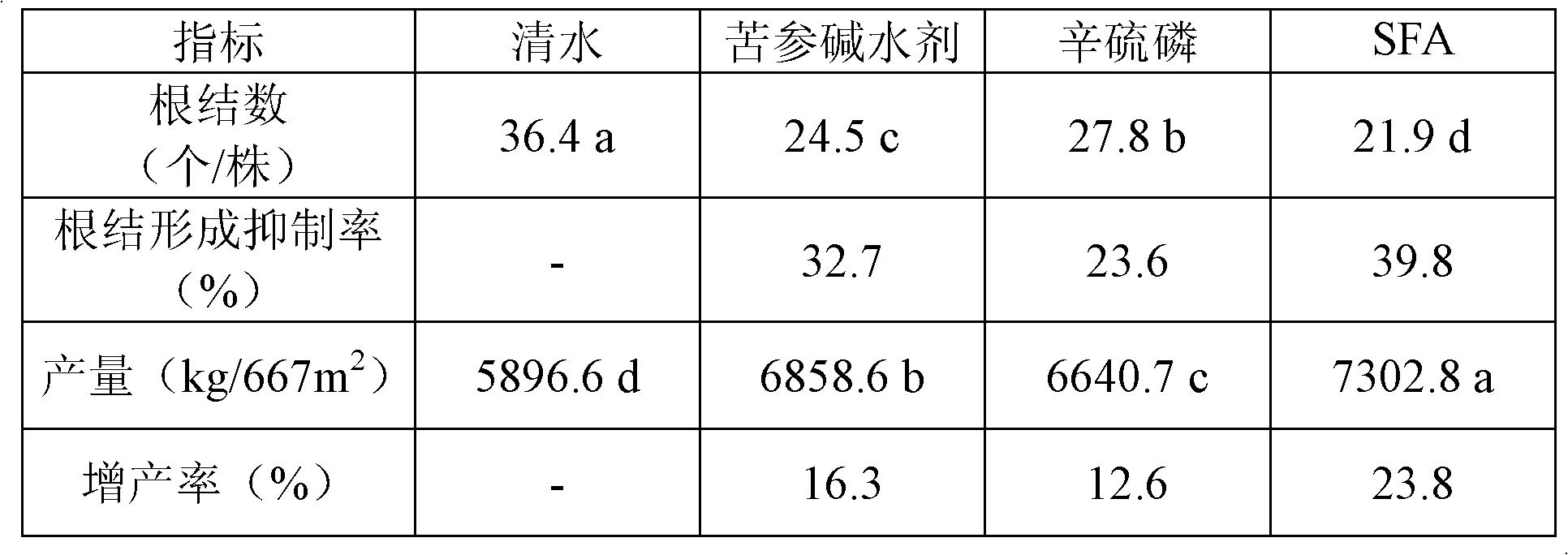Method for producing insect-resistant fulvic acid by using tobacco waste
A technology of tobacco waste and insect resistance, applied in the application, fertilizer mixture, organic chemistry and other directions, can solve the problem of backlog pollution of tobacco waste, and achieve the effects of improving stress resistance, buffering capacity and low cost
- Summary
- Abstract
- Description
- Claims
- Application Information
AI Technical Summary
Problems solved by technology
Method used
Image
Examples
Embodiment 1
[0027] A method for producing insect-resistant fulvic acid from tobacco waste, comprising the following steps:
[0028] 1) Tobacco waste such as cigarette rods is chopped into 2cm long pieces with a diameter of 2-3cm; then, in terms of mass parts, 100 parts of tobacco waste are placed in a mixing reactor, and 50 parts of water are sprayed while stirring until After the straw is fully wetted, spray 0.05 parts of sulfuric acid as a catalyst, add 80 parts of 40% nitric acid as an oxidant, and place it at room temperature for 1 to 2 hours;
[0029] 2) move the mixture after placing in the aging reactor, and pass into steam (the flow of steam is 80m 3 / h), start timing when the material temperature reaches 90°C, control the temperature at 95-100°C, and keep it for 2h;
[0030] 3) Move the mixed material after oxidative degradation to the extractor, add 85 parts of 3% sodium hydroxide or potassium hydroxide solution as the extractant while stirring, and extract for 2 hours under th...
Embodiment 2
[0032] 1) Tobacco waste such as cigarette rods is chopped into small sections of 4 cm in length and 1-2 cm in diameter; then 100 parts of tobacco waste are placed in a mixing reactor in parts by mass, and 60 parts of water are sprayed while stirring until After the straw is fully wetted, spray 2 parts of sulfuric acid as a catalyst, add 90 parts of 30% hydrogen peroxide as an oxidant, and place it at room temperature for 1 to 2 hours;
[0033] 2) move the mixture after placing in the aging reactor, and pass into steam (the flow of steam is 80m 3 / h), start timing when the material temperature reaches 85°C, control the temperature at 90-95°C, and keep it for 4h;
[0034] 3) Move the mixed material after oxidative degradation to the extractor, add 85 parts of 2% sodium hydroxide solution as the extractant while stirring, and extract for 2.5 hours at PH≤5.5 and 70°C; then move the material to Squeeze in a solid-liquid separator, collect all liquid parts, and filter to obtain ins...
Embodiment 3
[0036] 1) Tobacco waste such as cigarette rods is chopped into small sections of 4 cm in length and 1-2 cm in diameter; then 100 parts of tobacco waste are placed in a mixing reactor in parts by mass, and 60 parts of water are sprayed while stirring until After the stalk is fully wetted, spray 2 parts of sulfuric acid as a catalyst, mix 40% nitric acid and 30% hydrogen peroxide as an oxidizing agent according to the volume ratio of nitric acid: hydrogen peroxide = 0.3: 0.5, and place it at room temperature for 1-2 hours;
[0037] 2) move the mixture after placing in the aging reactor, and pass into steam (the flow of steam is 85m 3 / h), start timing when the material temperature reaches 85°C, control the temperature at 90-100°C, and keep it for 3h;
[0038] 3) Move the mixed material after oxidative degradation to the extractor, add 85 parts of 2% potassium hydroxide solution as the extractant while stirring, and extract for 2.5 hours at PH≤5.5 and 70°C; then move the material...
PUM
| Property | Measurement | Unit |
|---|---|---|
| length | aaaaa | aaaaa |
| diameter | aaaaa | aaaaa |
Abstract
Description
Claims
Application Information
 Login to View More
Login to View More - R&D
- Intellectual Property
- Life Sciences
- Materials
- Tech Scout
- Unparalleled Data Quality
- Higher Quality Content
- 60% Fewer Hallucinations
Browse by: Latest US Patents, China's latest patents, Technical Efficacy Thesaurus, Application Domain, Technology Topic, Popular Technical Reports.
© 2025 PatSnap. All rights reserved.Legal|Privacy policy|Modern Slavery Act Transparency Statement|Sitemap|About US| Contact US: help@patsnap.com



